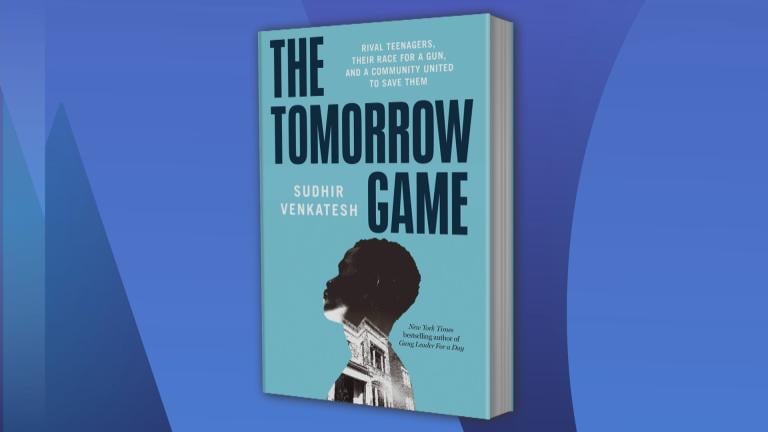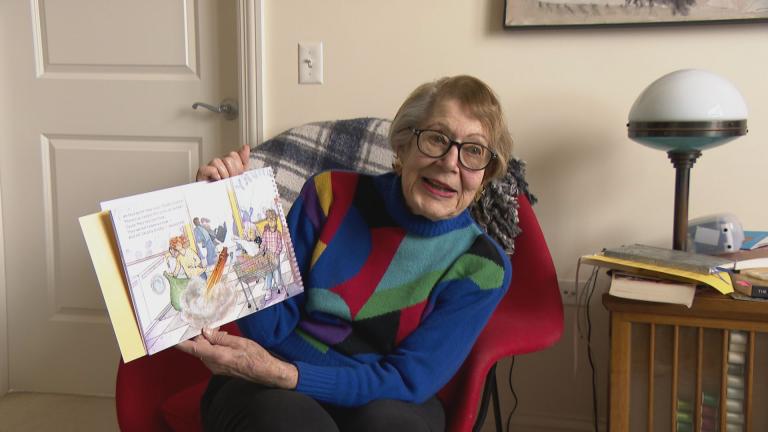Anger has been a pervasive emotion in human beings throughout history. But what should we do with our anger, and what exactly is it anyway?
In her new book "Anger and Forgiveness," Martha Nussbaum, a professor of law and ethics at University of Chicago, offers insight into ideas of resentment, generosity and justice.
Anger is a “painful reaction to a damage, but it has to be a damage that you think is wrongfully inflicted, not just negligent, not just accidental,” Nussbaum said.
She argues that anger's core ideas are harmful, and that notions of retribution are profoundly misleading.
“This payback fantasy – this payback thought – it’s probably as old as our evolutionary heritage; it’s probably in our genes someplace, because we thought we had to fight or flight. And still, it’s not very helpful, because causing pain to that person probably doesn’t help solve the original problem, whatever it was,” Nussbaum said.
Citing Nelson Mandela and Mohandas Gandhi, Nussbaum writes of peacefully conducted social movements that have been successful. In today's angry and punitive society, she argues that transitioning from anger to compassionate hope is the only way.
Below, an excerpt from "Anger and Forgiveness."

Chapter 1
Introduction: Furies into Eumenides
At the end of Aeschylus’ Oresteia, two transformations take place in the archaic world of the characters, transformations that the fifth-century Athenian audience would recognize as fundamentally structuring their own world. One transformation is famous, the other often neglected. In the famous transformation, Athena introduces legal institutions to replace and terminate the seemingly endless cycle of blood vengeance. Setting up a court with established procedures of reasoned argument and the weighing of evidence, an independent third-party judge, and a jury selected from the citizen body of Athens, she announces that blood guilt will now be settled by law, rather than by the Furies, ancient goddesses of revenge. But – and this is part and parcel of her famous transformation of the Athenian community – the Furies are not simply dismissed. Instead, Athena persuades them to join the city, giving them a place of honor beneath the earth, in recognition of their importance for those same legal institutions and the future health of the city.
Typically this move of Athena‟s is understood to be a recognition that the legal system must incorporate the dark vindictive passions and honor them. Thus the great Hellenist Hugh Lloyd-Jones concludes, “Far from wishing to abolish the prerogatives of the Erinyes, Athena is anxious to conserve them.”1 The suggestion is that the retributive passions themselves remain unaltered; they simply have a new house built around them. They agree to accept the constraints of law, but they retain an unchanged nature, dark and vindictive.
That reading, however, ignores the second transformation, a transformation in the nature and demeanor of the Furies themselves. At the outset of the trilogy’s third drama, the Furies are repulsive and horrifying. Apollo’s Priestess, catching a glimpse of them, runs in such haste that, an elderly woman, she falls and “runs” on all fours (Eumenides 34-38). They are not women but Gorgons, she exclaims. No, not even Gorgons, since these have no wings.2 They are black, disgusting; their eyes drip a hideous liquid, and they snore a fearsome blast. Their attire is totally unfitting for civilized gatherings (51-56). Shortly afterwards, Apollo depicts them as vomiting up clots of blood that they have ingested from their prey (183-4). They exist, he says, only for the sake of evil (72). They belong in some barbarian tyranny where it is customary to kill people arbitrarily, to mutilate and torture them (185-90).3
Nor, when they awaken, do the Furies give the lie to these grim descriptions. As Clytemnestra‟s ghost calls them, they do not speak, but simply moan and whine: the text mentions mugmos and oigmos, noises characteristic of dogs. Their only words, as they awaken, are “get him get him get him get him” (labe labe etc.), as close to a doggy hunting cry as the genre allows. As Clytemnestra says: “In your dream you pursue your prey, and you bark like a hunting dog hot on the trail of blood” (131-2). If the Furies are later given articulate speech, as the genre demands, we are never to forget this initial characterization.
1 Aeschylus, Eumenides, translation and commentary by Hugh Lloyd-Jones (Englewood Cliffs: Prentice-Hall, 1970), 76.
2 Translations mine, with influence from Lattimore. Remarkably, she pauses long enough to mention that she knows what Gorgons look like, since she has seen them in a painting by Phineas.
3 He mentions various cruel punishments that are associated in Greek lore with Persian despotism.
Reprinted with permission, from Anger and Forgiveness, Oxford University Press, 2016.
Sign up for our morning newsletter to get all of our stories delivered to your mailbox each weekday.
Related 'Chicago Tonight' stories
 Steve Dahl Dissects the Disco Demolition
Steve Dahl Dissects the Disco Demolition
July 11: The new book "Disco Demolition: The Night Disco Died" explores the notorious history of the "Anti-Disco Army" – a rebellion that led to chaos at Comiskey Park and a forfeited game for the Chicago White Sox.
 Protests Continue in Wake of Police Shootings Around US
Protests Continue in Wake of Police Shootings Around US
July 11: Over the weekend, Chicago police arrested 21 protesters on charges ranging from obstructing traffic and resisting arrest to aggravated battery of a peace officer. Demonstrators say more protests are planned for the week ahead.







